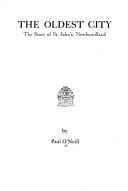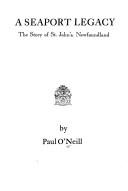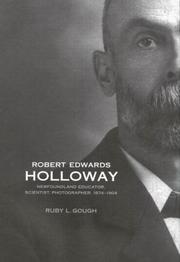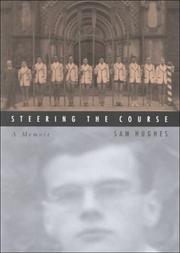| Listing 1 - 8 of 8 |
Sort by
|

ISBN: 0888780702 Year: 1975 Publisher: Erin, Ont. : Press Porcépic,
Abstract | Keywords | Export | Availability | Bookmark
 Loading...
Loading...Choose an application
- Reference Manager
- EndNote
- RefWorks (Direct export to RefWorks)
Book
ISBN: 1990445039 Year: 2021 Publisher: St. John's, NL : Memorial University Press,
Abstract | Keywords | Export | Availability | Bookmark
 Loading...
Loading...Choose an application
- Reference Manager
- EndNote
- RefWorks (Direct export to RefWorks)
At a distance, Corner Windows and Cul-De-Sacs is a study of urban growth, planning, and household reform; up close, the study reveals a much more human story. In 1942, while Newfoundland was in an active war zone, the death rate in St. Johns was higher than anywhere else in the colony. Overcrowded and dilapidated tenements, huddled on a maze of narrow lanes, fell prey to rampant tuberculosis, shockingly high infant mortality rates, and infectious disease. In 1944, under crippiling debt, the St. Johns Housing Corporation was formed, with a mandate to build a new garden suburb north of the city that would lead to the abandonment and demolition of the derelict housing. Churchill Park became the core of this residential development, and between 1945 and 1947 more than 200 houses and nearly 100 apartment units were constructed, laying the groundwork for the orderly post-war expansion of the city.--
Suburbs --- Housing --- Housing development --- City planning --- Municipal government --- History --- History --- History --- History --- History --- St. John's (N.L.) --- St. John's (N.L.) --- St. John's (N.L.) --- Social conditions --- Economic conditions --- History

ISBN: 0888781105 Year: 1976 Publisher: Erin, Ont. : Press Porcépic,
Abstract | Keywords | Export | Availability | Bookmark
 Loading...
Loading...Choose an application
- Reference Manager
- EndNote
- RefWorks (Direct export to RefWorks)
St. John's (Nfld.) --- History --- St. John's (N.L.) --- History.
Book
ISBN: 1771172797 Year: 2013 Publisher: St. John's, Newfoundland and Labrador : Flanker Press Limited,
Abstract | Keywords | Export | Availability | Bookmark
 Loading...
Loading...Choose an application
- Reference Manager
- EndNote
- RefWorks (Direct export to RefWorks)
Fires --- Fire extinction --- Fire fighters --- History. --- History. --- History. --- St. John's (N.L.). --- History.
Book
ISBN: 1283530287 9786613842732 0773581103 9780773581104 9781283530286 6613842737 9780773537507 0773537503 Year: 2010 Publisher: Montreal Ithaca McGill-Queen's University Press
Abstract | Keywords | Export | Availability | Bookmark
 Loading...
Loading...Choose an application
- Reference Manager
- EndNote
- RefWorks (Direct export to RefWorks)
In January 1941, the hulking twenty-one thousand ton troopship Edmund B. Alexander docked in St John's harbor, carrying a thousand American soldiers sent to join the thousands of Canadian troops protecting Newfoundland against attack by Germany. France had fallen, Great Britain was fighting for its survival, and Newfoundland - then a dominion of Britain - was North America's first line of defence. Although the German invasion never came, St John's found itself occupied by both Allied Canadian and American forces.
World War, 1939-1945 --- Civil-military relations --- History --- St. John's (N.L.) --- History, Military --- Strategic aspects
Book
ISBN: 077359034X 9780773590342 9780773590359 0773590358 0773543112 9780773543119 0773543104 9780773543102 Year: 2014 Publisher: Montreal [Quebec] : Beaconsfield, Quebec : McGill-Queen's University Press, Canadian Electronic Library,
Abstract | Keywords | Export | Availability | Bookmark
 Loading...
Loading...Choose an application
- Reference Manager
- EndNote
- RefWorks (Direct export to RefWorks)
The twentieth century witnessed both the formation of Newfoundland as a self-conscious national entity and the construction of distinct and self-aware middle and upper classes in its capital city. This interdisciplinary collection examines the key roles played by women in the creation of this state and society, and the essential influence that gender, ethnicity, and religion played in class relations. Shifting class relations were formed in the salient political events of the first half of the twentieth century in Newfoundland: the First World War, the suffrage movement, the Great Depression, the Second World War, and finally Newfoundland's contested entry into the Canadian Confederation. Creating This Place shows how upper-, middle-, and working-class worlds were established in the everyday work of women, as well as the ways in which the complex social boundaries of the period were constructed. Individual chapters explore issues such as women's work in religious and voluntary institutions, their struggle for voice, suffrage, and political change, work of domestic servants, and the construction of "proper" women and mothers through denominational education. Creating This Place adopts an innovative perspective on Newfoundland and Labrador that focuses on the often overlooked lives of urban women. Contributors include Sonja Boon (Memorial University), Linda Cullum (Memorial University), Margot Duley (University of Illinois at Springfield), Vicki Hallett (Memorial University), Jonathan Luedee (doctoral candidate, University of British Columbia), Bonnie Morgan (doctoral candidate, University of New Brunswick), Marilyn Porter (emerita, Memorial University), Karen Stanbridge (Memorial University), Helen Woodrow (Educational Planning and Design Associates and Harrish Press Publications).
Urban women --- City dwellers --- Women --- History --- St. John's (N.L.) --- Newfoundland and Labrador --- St. John's (T.-N.-L.) --- Terre-Neuve-et-Labrador --- Newfoundland --- Saint John's (N.L.) --- St. John's (Nfld.) --- St. Iohns (N.L.) --- City of St. John's (N.L.) --- Social conditions --- Histoire --- Conditions économiques

ISBN: 128286324X 9786612863240 0773572589 9780773572584 9780773528529 0773528520 6612863242 Year: 2005 Publisher: Montreal Ithaca McGill-Queen's University Press
Abstract | Keywords | Export | Availability | Bookmark
 Loading...
Loading...Choose an application
- Reference Manager
- EndNote
- RefWorks (Direct export to RefWorks)
Holloway was a scientist and innovative teacher who opened his classes to the public and kept up with current developments in science, demonstrating new discoveries in public lectures. For a time College Hall at Methodist College, later named Holloway School, was the site for the production of X-rays and their use for diagnosis and treatment by local doctors.
College teachers --- Academicians --- Academics (Persons) --- College instructors --- College lecturers --- College professors --- College science teachers --- Lectors (Higher education) --- Lecturers, College --- Lecturers, University --- Professors --- Universities and colleges --- University academics --- University instructors --- University lecturers --- University professors --- University teachers --- Teachers --- Faculty --- Holloway, Robert Edwards, --- Methodist College (St. John's, N.L.) --- Professeurs (Enseignement supérieur) --- Methodist College (St. John's, N.-L.) --- Corps enseignant --- Professeurs (Enseignement superieur)

ISBN: 1282858556 9786612858550 0773568360 9780773568365 0773520422 9780773520424 9781282858558 6612858559 Year: 2000 Publisher: Montreal [Que.] McGill-Queen's University Press
Abstract | Keywords | Export | Availability | Bookmark
 Loading...
Loading...Choose an application
- Reference Manager
- EndNote
- RefWorks (Direct export to RefWorks)
Hughes gives moving details about his life, from his time in England as a child while his father was in action in France during World War I, to time abroad in the army during World War II, to events during his twenty-six-year tenure on the bench. His passion for family and for law shine through his account. Even after retirement, he was still very much involved in the law and was appointed to lead the Royal Commission investigating child abuse at the Mount Cashel Orphanage in Newfoundland. Steering the Course not only documents a life but provides a poignant first-hand account of this century. His recollections of the events and changes that this country has undergone during the last eighty years are a stirring reminder of an important part of our recent past. From the book: "My earliest recollection was of the first daylight air raid on London when my mother and I were living in St John's Wood. I remember the explosions that accompanied the bombing of Selfridge's in Oxford Street and I remember clearly that the taxi from which we were hastily removed had yellow facings on its doors." "On New Year's Day 1944 misery and frustration prevailed. Slit trenches, the natural refuge and even sleeping place for soldiers in combat, were full of water . George Renison and I took a bottle of Scotch whisky to the command vehicle of the First Brigade . The bottle, which went only once around the company, was a reminder of the celebrations of other days and its like had not been seen for weeks."
Judges --- Child sexual abuse --- Alcaldes --- Cadis --- Chief justices --- Chief magistrates --- Justices --- Magistrates --- Courts --- Child molestation --- Child molesting --- Molestation of children --- Molesting of children --- Sexual abuse of children --- Sexual child abuse --- Child abuse --- Sex crimes --- Investigation. --- Legal status, laws, etc. --- Officials and employees --- Hughes, S. H. S. --- Ontario. --- Mount Cashel Orphanage (St. John's, N.L.) --- Investigation
| Listing 1 - 8 of 8 |
Sort by
|

 Search
Search Feedback
Feedback About UniCat
About UniCat  Help
Help News
News